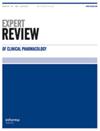Effect of fasudil on clinical outcomes of pulmonary hypertension: a systematic review and meta-analysis.
IF 3
3区 医学
Q2 PHARMACOLOGY & PHARMACY
引用次数: 0
Abstract
BACKGROUND Pulmonary hypertension (PH) is a life-threatening condition with high mortality, categorized into 5 Groups based on distinct etiologies. Fasudil, a potent vasodilator targeting the RhoA/Rho kinase pathway, holds promise for diverse PH pathologies. However, a comprehensive systematic evaluation of its clinical benefits remains elusive. METHODS We conducted a systematic search across several databases. Meta-analysis using odds ratio and mean difference was performed, with an assessment of studies' quality and pooled evidence. RESULTS Studies on Group-2 and -3 PH reports eligible data for meta-analysis. Inclusion of 3269 patients with Group-3 PH demonstrated that fasudil significantly increased effective events, FEV1, 6-minute walking distance (6MWD) and arterial PaO2, and decreased mean pulmonary artery pressure (mPAP) and pulmonary artery systolic pressure (PASP); Inclusion of 197 patients with Group-2 PH suggested that fasudil significantly increased 6MWD and PaO2, and decreased PASP. Subgroup analysis revealed no significant difference between dosages of 30 and 60 mg/day, while durations and methods of fasudil administration might affect therapeutic effectiveness in patients with Group-3 PH. CONCLUSIONS By providing comprehensive and robust evidence, our study favor the beneficial effects of fasudil by enhancing FEV1, 6MWD and PaO2, and reducing mPAP and PASP on patients with Group-3 PH, suggesting fasudil as a viable treatment recommendation for these patients and highlighting the need for further studies to inform healthcare policies. PROTOCOL REGISTRATION www.crd.york.ac.uk/prospero identifier is CRD42022308947.法舒地尔对肺动脉高压临床疗效的影响:系统综述和荟萃分析。
背景肺动脉高压(PH)是一种威胁生命的疾病,死亡率很高,根据不同的病因可分为 5 类。法舒地尔是一种靶向 RhoA/Rho 激酶通路的强效血管扩张剂,有望治疗各种 PH 病症。方法我们在多个数据库中进行了系统性检索。结果关于第 2 组和第 3 组 PH 的研究报告符合荟萃分析的数据要求。纳入3269例3组PH患者的研究表明,法舒地尔能显著增加有效事件、FEV1、6分钟步行距离(6MWD)和动脉PaO2,降低平均肺动脉压(mPAP)和肺动脉收缩压(PASP);纳入197例2组PH患者的研究表明,法舒地尔能显著增加6MWD和PaO2,降低PASP。亚组分析显示,30 毫克/天和 60 毫克/天的剂量之间没有明显差异,而法舒地尔的用药时间和方法可能会影响第 3 组 PH 患者的疗效。结论通过提供全面而有力的证据,我们的研究支持法舒地尔通过提高FEV1、6MWD和PaO2,降低mPAP和PASP对3组PH患者的有益作用,建议将法舒地尔作为这些患者的可行治疗建议,并强调了进一步研究的必要性,以便为医疗保健政策提供信息。PROTOCOL REGISTRATIONwww.crd.york.ac.uk/prospero identifier is CRD42022308947.
本文章由计算机程序翻译,如有差异,请以英文原文为准。
求助全文
约1分钟内获得全文
求助全文
来源期刊

Expert Review of Clinical Pharmacology
PHARMACOLOGY & PHARMACY-
CiteScore
7.30
自引率
2.30%
发文量
127
期刊介绍:
Advances in drug development technologies are yielding innovative new therapies, from potentially lifesaving medicines to lifestyle products. In recent years, however, the cost of developing new drugs has soared, and concerns over drug resistance and pharmacoeconomics have come to the fore. Adverse reactions experienced at the clinical trial level serve as a constant reminder of the importance of rigorous safety and toxicity testing. Furthermore the advent of pharmacogenomics and ‘individualized’ approaches to therapy will demand a fresh approach to drug evaluation and healthcare delivery.
Clinical Pharmacology provides an essential role in integrating the expertise of all of the specialists and players who are active in meeting such challenges in modern biomedical practice.
 求助内容:
求助内容: 应助结果提醒方式:
应助结果提醒方式:


